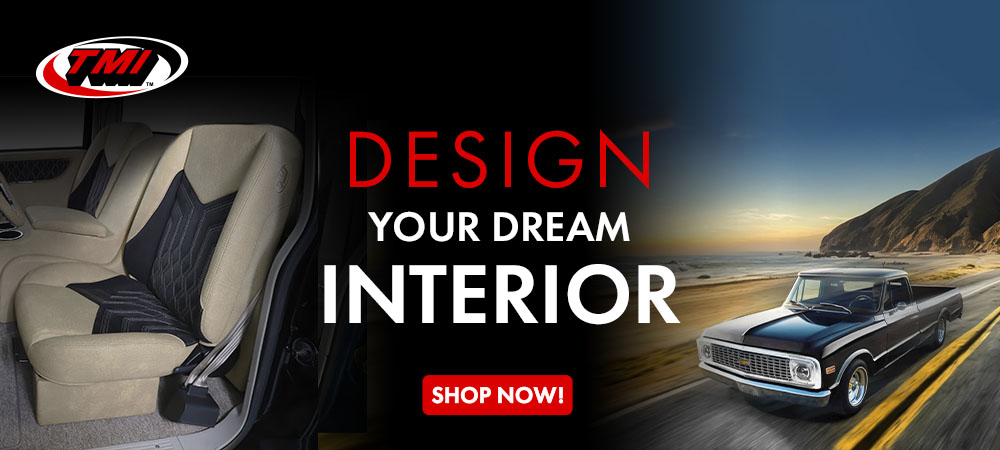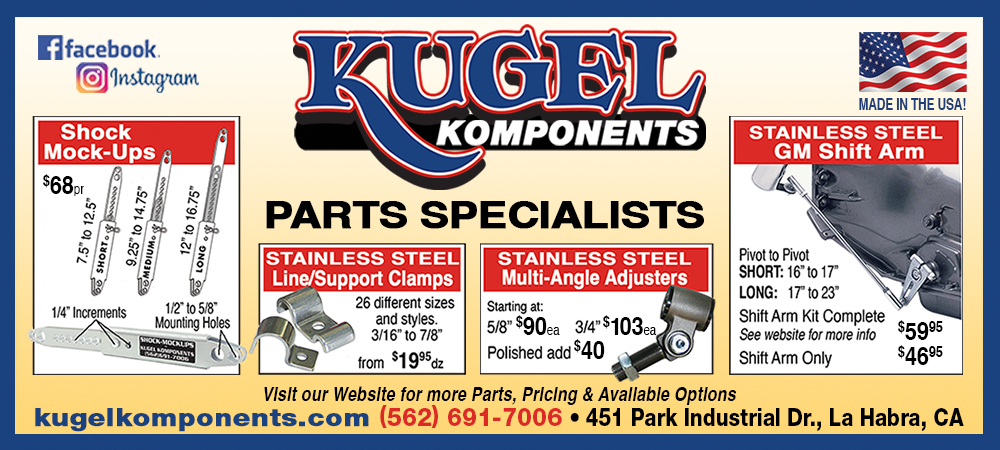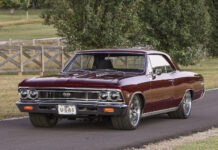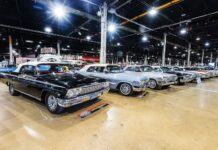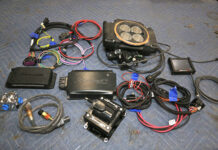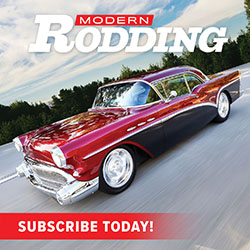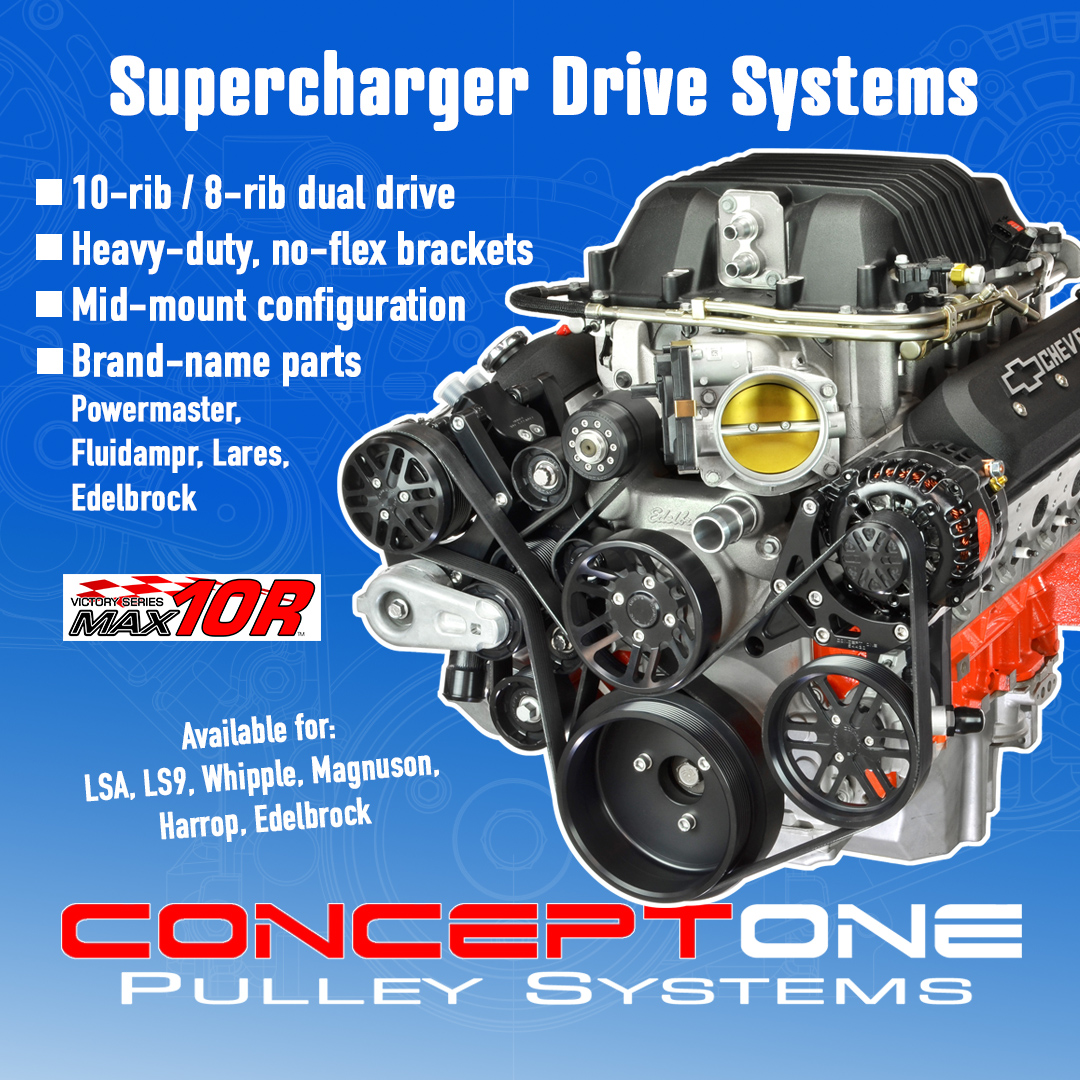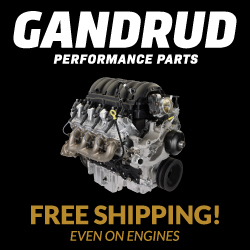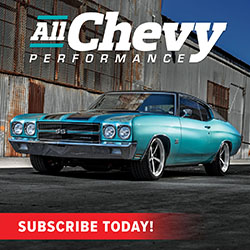By Jeffrey James Patrick – Photography by the Author
The annual SEMA Show in Las Vegas hosts some wildly customized cars, yet this subtle ’67 Malibu garnered a lot of attention when it debuted in 2022. The car has just the right touches to make it special without losing any of the charm of the Chevy lines. The car’s owner, Habib Chababi, who runs a surveying company in Southern California, wanted a car that would be fun and easy to drive, with minimal headaches.
Discovering the ’67 Malibu: A Journey from Classic to Custom
Habib is the second registered owner of the car. Its original owner lived in L.A.’s San Fernando Valley, and when he died in 2005, he left it to a friend who had no idea how to care for the pristine, dent-free classic. This friend just happened to live on the same street as Habib who noticed Habib driving a ’69 Charger and took that as a sign that he’d be a good steward for the vintage Chevy. Habib drove the car for a bit until he decided it was time for a mild restoration, which was never fully completed. The Malibu then sat for years before he decided it was time that the car got the attention it deserved, and in 2020, it finally did.
Choosing the Right Restoration Shop: Pure Vision’s Role
After doing some homework for the right shop to handle his build and hearing plenty of advice to visit Pure Vision in Simi Valley, California, Habib dropped by and met proprietor Steve Strope. The two got along immediately and hashed out how to go about creating the perfect weekend driver that can stay in the family for years to come. Habib’s friends were pushing him to paint the Chevelle a dark charcoal or sinister black, but he reminded them that it’s meant for fun drives and cruising with his family. “It’s a California car, it had to be light,” Habib told us. The custom-mixed PPG paint is close to the original Emerald Turquoise; a similar color scheme was continued inside.
Read More: Malibu 2.0
Don’t tell your Mopar-loving friends, but Pure Vision was able to get the last bit of this N.O.S. fabric that the distributor had in stock. The staggered bar upholstery was from a mid-century Dodge and it’s a perfect fit for the Chevelle’s aqua exterior. Like the outside that appears factory but is finessed to perfection, nothing stands out in the interior as being out of place. The Vintage Air climate-control system is cleanly integrated and painted to match, and the Dakota Digital instrument cluster appears factory but stealthily integrates a tachometer as well as a digital speedometer.
Designing for Driveability: The Malibu’s Custom Restoration
Pure Vision freshened up the factory chassis with Detroit Speed suspension front and rear combined with big Wilwood brakes and 17-inch Team III wheels mounted with Nitto NT555 rubber. The wheel’s style gives the car a Day Two look and the increased diameter doesn’t stand out yet still allows for modern rubber for much improved grip, which will definitely be needed.
Under the Hood: Engineering the Perfect Powertrain
Read More: Totally Custom Pro Touring-Style 1967 Chevy Chevelle
After briefly considering an LS swap, Habib turned to Strope as well as Steve Sanett, owner of Penta Motorsports, for input on the proper powerplant. Naturally a Chevelle should have a big-block, the three agreed, but it had to be something special.
Knowing it’s not about just making a power number, Sanett always asks his customers, “What are you trying to accomplish? And what are you going to do with the car?” The answers to those questions will dictate what kind of engine would be best suited to the car and its driver. There’s a tendency for many of us to want to go too big with a cam or with heads that have massive ports that offer impressive flow numbers, but that’s not always conducive to street driving. That’s why, for this build, Sanett suggested Habib go mild with the big-block so that it would be a great driver on the street. However, he had an ace up his sleeve when it came to wowing onlookers at the local car show. Penta Motorsports specializes in Weber carburetors, and Sanett is a big proponent of the highly tunable fuel-mixers, although he noted that there are a lot of misconceptions about Webers that persist: “People are afraid of them,” Sanett says. “Although those fears are unfounded, they can work on everything, provided you understand the concept.”
Sanett told us that with an individual runner system used on a Weber intake reversion can be an issue. To get them to behave properly on the street, Webers prefer a cam with very little overlap. He selected a mild hydraulic roller cam and mounted the Webers with a Borla intake that was milled down about 0.375 inch to gain a bit of hood clearance. Most builders use the intake with throttle bodies that mimic a Weber, but Sanett loves the tunability that comes with Weber carbs. The idle circuit is independent from the main circuit, and there are jets for both fuel and air correction. Once they’re dialed in, they’re set.
Read More: Dave Giles Restores “Tiger II”
The big-block breathes through a set of four down-draft IDA 48 Weber carbs that are choked down to 42 mm, keeping air velocity high. Its short runners provide instant throttle response, and the mild hydraulic roller cam lets it purr at idle. It makes tremendous torque off idle thanks to its displacement, making it a breeze to drive with the tough TREMEC TKO 600 five-speed. It also manages to pull hard out past 6,000 rpm. However, there is one drawback: With no choke, the engine likes to be warmed up for 30 seconds or a minute before it’s happy. Considering the car lives in temperate Southern California, it won’t ever be an issue.
A Family Heirloom: Future Plans for the Malibu
Proving that a car doesn’t have to be radically modified to turn heads and also be enjoyable, Habib’s understated Malibu took a detail-oriented approach and will never go out of style. His plans are to keep it just like this and enjoy it, and once his kids are old enough they can take their place behind the wheel.
TECH CHECK:
Owner: Habib Chababi, Santa Clarita, California
Vehicle: ’67 Malibu
Engine Type: Chevrolet big-block
Displacement: 511 ci
Compression Ratio: 10.1:1
Bore: 4.31 inches
Stroke: 4.375 inches
Cylinder Heads: Edelbrock Performer Rotating Assembly:
Scat Camshaft: Custom-ground hydraulic roller approximately 270/280 duration
Induction: Borla intake manifold, four Weber IDA 48 carburetors
Assembly: Penta Motorsports
Exhaust: Sanderson block-hugger, 3-inch ceramic-coated, Flowmaster mufflers
Ancillaries: Billet Specialties Tru Trac accessory drive
Output: 550 hp (Est.)
Drivetrain:
Transmission: TREMEC TKO 600
Clutch: Centerforce clutch,MalWood USA hydraulic master cylinder
Rear Axle: Factory 10-bolt with 3.08:1 gears and limited-slip posi
Chassis:
Chassis: Factory
Front Suspension: Detroit Speed tubular control arms and splined sway bar, JRi single-adjustable coilover shocks
Rear Suspension: Detroit Speed tubular control arms and splined sway bar, JRi single-adjustable coilover shocks
Brakes: Wilwood 13-inch Superlite rotors, six-piston calipers front, Wilwood 13-inch Superlite rotors, four-piston calipers rear
Wheels & Tires:
Wheels: E-T Wheels Classic V (17×7 front, 17×9.5rear)
Tires: Nitto NT555 G2; 225/50R17 front, 275/50R17 rear
Interior:
Upholstery: Aqua loop carpet, custom N.O.S. Mopar upholstery
Installation: Gabe’s Street Rod Custom Interiors (San Bernardino, CA)
Seats: Corbeau GT II
Steering: Flaming River tilt column, GM G-body 12.7:1 steering box.
Shifter: Hurst
Dash: Stock
Instrumentation: Dakota Digital RTX Pedals:
Factory HVAC: Vintage Air Gen IV
Entertainment System: Kicker five-channel 660-watt amp, 10-inch Kicker subwoofer, and Kicker components
Exterior:
Bodywork and Paint: Mick’s Paint (Pomona, CA)
Paint: PPG Emerald Turquoise
Grille: Year One
Front Bumper: Stock
Rear Bumper: Stock
Headlights: Stock
Taillights: Stock
Side Mirror: Stock
Plating: Advanced Plating (Portland, Tennessee)
Click on this issue’s cover to see the enhanced digital version of Flawlessly Finessed.















